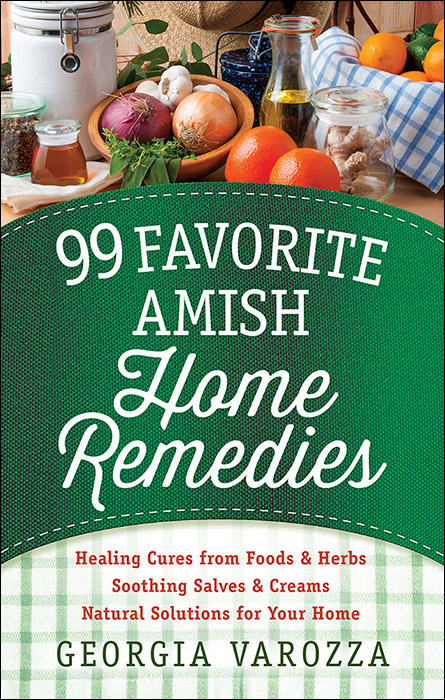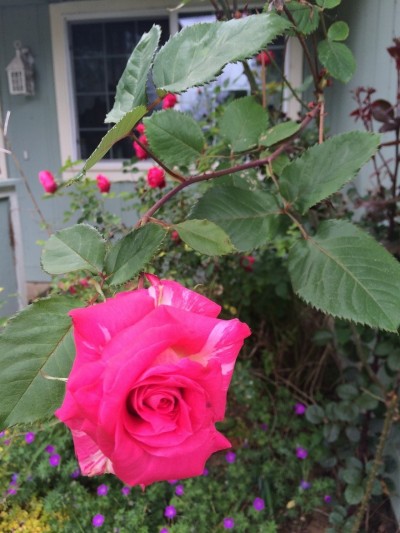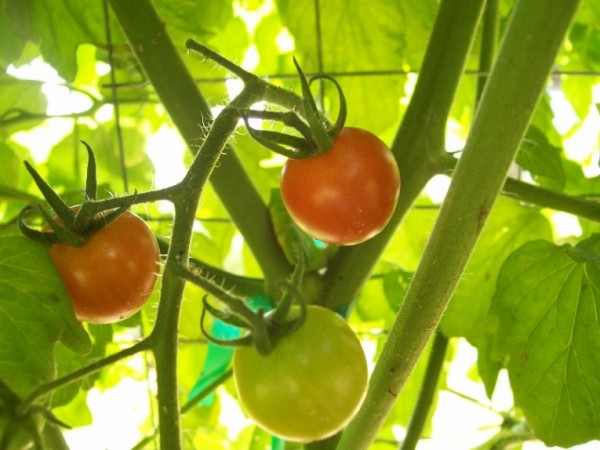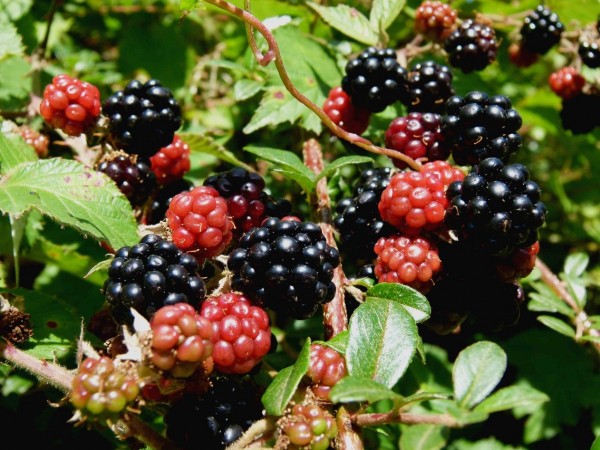A Gardening Secret Learned from the Amish: Article by Georgia Varozza
 Then God said,
Then God said,
“I give you every seed-bearing plant
on the face of the whole earth
and every tree that has fruit with seed in it.
They will be yours for food.”
—GENESIS 1:29
Epsom salt works for more than soothing the aches and pains from sore muscles—it’s a workhorse in the garden too!
Years ago when I attended a conservative Amish Mennonite church, I went to an elderly church member’s home for a visit. I couldn’t help but notice that her flower beds were exceptionally beautiful, and her rosebushes were particularly stunning. I asked what her secret was for such beauty and she told me about Epsom salt. Here is what I learned:
* * *
Epsom salt is a naturally occurring mineral mixture of magnesium and sulfate. You can buy Epsom salt in grocery stores and drugstores, and a box or bag is very inexpensive. A few dollars spent now will last you a good while, and once you begin using it, you’ll wonder how you ever managed without it.
What that dear lady told me all those years ago was to sprinkle a small handful of Epsom salt around the base of my rosebushes and then pour a bottle of red wine around each bush once spring growth started. (Use the cheapest red wine you can find—the roses won’t care!)
those years ago was to sprinkle a small handful of Epsom salt around the base of my rosebushes and then pour a bottle of red wine around each bush once spring growth started. (Use the cheapest red wine you can find—the roses won’t care!)
I took her advice and was amazed at how happily my roses responded. I’ve been doing it ever since, although now I don’t use the wine because my frugal nature is such that I don’t like to spend the money. Instead, I sprinkle a couple of tablespoonfuls around the base of each rosebush about three times each summer growing season, and they respond well.
Here are some other uses for Epsom salt in the garden:
– Before planting your vegetable garden in the spring, scratch in one cup of Epsom salt for every 100 square feet of planting area.
– Mix one tablespoon of Epsom salt for every foot of plant height in a watering can for all your veggies except sage and use the solution to water your plants; repeat as often as every two weeks.
– Tomatoes, peppers, and fruit trees and plants will often thrive with a foliar spray made using 1 tablespoon of Epsom salt to every gallon of water. You can use this spray as often as every two weeks, but I figure I’m doing well if I get to it three times during the season. If your soil is lacking in magnesium and/or sulfur, you’ll notice that your fruits and veggies taste sweeter and are bigger than their non-sprayed neighbors.
– When transplanting veggies or when planting a new rosebush in your garden, scratch a spoonful or two into the bottom of the hole, making sure that a layer of dirt covers the Epsom salt so the tender roots don’t directly touch the salt.
By the way, Epsom salt will dissolve much easier if you use warm water instead of cold water straight from the hose. Before using the mixture, set the watering can aside in the shade until the water has cooled.
Being frugal by nature, Epsom salt has found a permanent place in my home, and I hope you’ll find it useful too. And with gardening season just about upon us, this is the perfect time to get to a local store and buy your “garden success in a bag”!
Blessings and happy gardening,
Georgia
Learn how to live the simple life with more great ideas for healthcare, home, and yard in 99 Favorite Amish Home Remedies!
* * *
 Georgia Varozza, author of the popular Homestyle Amish Kitchen Cookbook (more than 70,000 copies sold), enjoys teaching people how to prepare and preserve healthy foods, live simply, and get the most from what they have. She works in publishing and lives in a small Oregon community. Visit her online at www.georgiaplainandsimple.blogspot.com.
Georgia Varozza, author of the popular Homestyle Amish Kitchen Cookbook (more than 70,000 copies sold), enjoys teaching people how to prepare and preserve healthy foods, live simply, and get the most from what they have. She works in publishing and lives in a small Oregon community. Visit her online at www.georgiaplainandsimple.blogspot.com.
Last 5 posts by Amber | AmishReader.com
- Thanksgiving Recipe: Roasted Rosemary Turkey - November 16th, 2018
- Recipes for a Three-Course Autumn Meal - October 23rd, 2018
- Autumn Interview with Vannetta Chapman - October 16th, 2018
- Autumn Recipe: Chili Bean Soup - September 19th, 2018
- Morning Treat Recipe: Easy Apple Fritters - August 17th, 2018





Leave a Reply